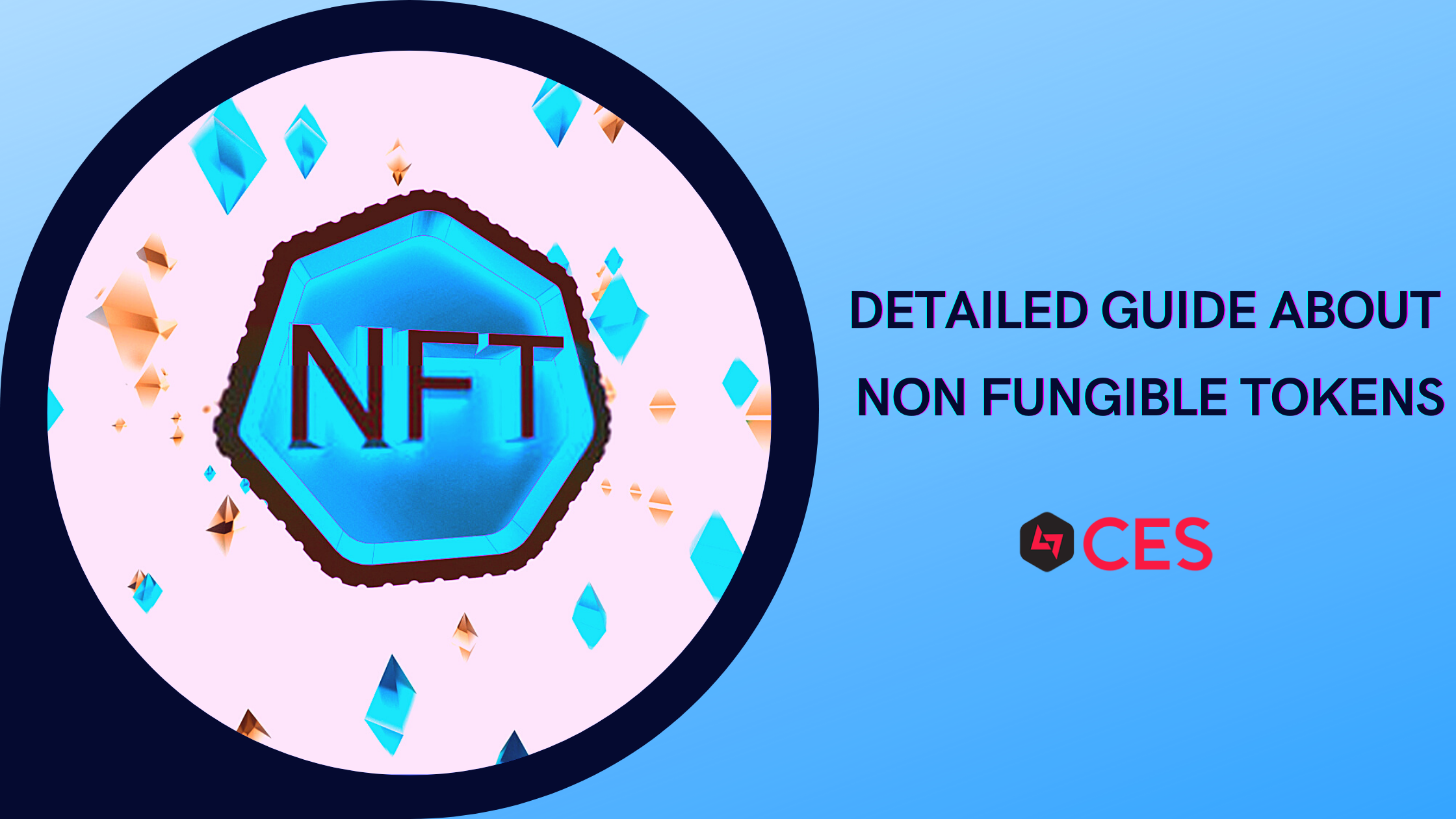We often come across infographics, jokes, artwork, and other digital assets in this digital-friendly world. Our connections, family or friends have shared it for entertainment, knowledge, or some other event. But aren’t you curious to know who the creator of that piece of digital content was? Who owns the digital content? The answer to all these questions lies in the arena of Non-Fungible Tokens (NFT).
The History Of NFT
The tale of NFTs goes back to the year 2017. In 2017, the first-ever non-fungible token was created on the American Studio Larva Lab’s Ethereum Blockchain named Crypto Punks. Two persons were behind this new invention- John Watkinson and Matt Hall. It inspired the evolution of another project called Crypto Kitties- and its skyrocketed popularity in history. It is estimated that around $12.5 million of investment was generated by Cryptokitties.
What Does NFT Mean?
Fungibility is an asset or in an item denotes its captivating powers to trade, buy, or sell assets or items of the same criteria or type. However, Non-Fungible tokens are unique digital assets created and developed on a blockchain network like Etehreum, where its growth can be tracked.
Non-Fungible Tokens (NFTs) are digital assets representing several intangible and tangible items, including paintings, virtual real-estate, postcards, videos, and much more. What makes a digital asset NFT is that it can not be replicated or equated into similar digital assets. Every single NFT is unique in itself.
Example Of An NFT
If you have a football game ticket, and someone wants to trade it with a movie ticket, will you accept it? No, you will not. Both the tickets are different. A movie ticket can not replace the game ticket ( which can be considered an NFT) because its value is more than that of a movie ticket; it can be replaced or traded with any other ticket. Every football game ticket is unique and has its own identity.
The same goes with the NFTs, it can not be traded off or exchanged with similar tokens, as every token is rare and unique in itself.
Characteristics Of NFTs
-
Interoperable
As NFTs follow the standard ERC-721, they’re considered non-interoperable, which means the information stored in them can’t be exchanged or used in any manner. But now, One NFT can be bought from one marketplace and can be sold to another.
-
Rare
Presently, the total number of NFTs is very less globally, and they’re very scarce. This not only makes them rare but also makes their value high. In simple terms, the lesser the number of NFTs, the pricier they’ll be.
-
Indestructible
The NFTs are stored and managed through Blockchain that results in a greater level of security for them. This means they can never be destroyed or removed at any cost.
-
Indivisible
You can’t send a portion of non-fungible tokens to anyone (unlike other cryptocurrencies) because they’re non-fungible and don’t have a defined value. For instance, one bitcoin will possess the same value after the transfer, but NFT won’t.
-
Verifiable
Another benefit of storing historical ownership data on the Blockchain is that items such as digital artwork can be traced back to the original creator, which allows pieces to be authenticated without the need for third-party verification.
Why Is NFTs Important?
- Since 2017, around $4 million have been spent on the NFTs
- Gamers and collectors can become the immutable owners of in-game items and other unique assets and make money from them.
- They can also sell individual digitals items they accrue during gameplay, such as costumes, avatars and in-game currency, on a secondary market.
- For artists, being able to sell artwork in digital form directly to a global audience of buyers without using an auction house or gallery allows them to keep a significantly more significant portion of the profits they make from sales.
- Royalties can also be programmed into digital artwork so that the creator receives a percentage of sale profits each time their artwork is sold to a new owner.
How Do Non Fungible Token Works?
Like any other crypto tokens, NFTs are also developed and managed on blockchain technology. Therefore, blockchain networks act as a decentralized ledger that keeps a record of every single transaction of an NFT with a code, unique ID, and other metadata that cannot be duplicated or manipulated. Thus, no other token can take the place of a unique token.
The procedure of creating NFTs is done through contact-enabled blockchains with the assistance of tools and support. Ethereum was one of the first widely utilized blockchain networks for NFT standards. With the integration of smart contracts, detailed information like ownership, owner’s identity, etc., can be managed. The attributes of scarcity and royalties make it more attractive.
Parameters help to measure the performance of NFTs
- Price
- Mobile application usability
- Socialization
- AR, VR, 3D, and Metaverse modes
- Fractional ownership
Futuristic Views On NFTs
Non-Fungible Tokens hold a promising future for the market. It is estimated that the total market crossed an incredible strike of $100 million by the end of July 2020. Industry leaders are optimistic that 40% of the new cryptocurrencies enthusiasts will use NFTs as their point of origin in the crypto market. As the DeFi ecosystem has a whopping $4 billion in value, it is obvious that NFT space will grow exponentially in the coming days.
How Can Cryptocurrency Exchange Script Help You?
Cryptocurrency Exchange Script tracks the rife of NFT. It is power-packed with futuristic development in multiple blockchains to utilize its specialized features and abilities to offer reliable NFT software development. Our experience in blockchain technology will assist your end-to-end NFT development solution with cross-chain abilities. We furnish top-notch services, where we meticulously utilize NFT uniqueness in safeguarding digital ownership, shielding IP rights, and conceiving real-world value. Unleash your entrepreneurial spirit through our fine services!
